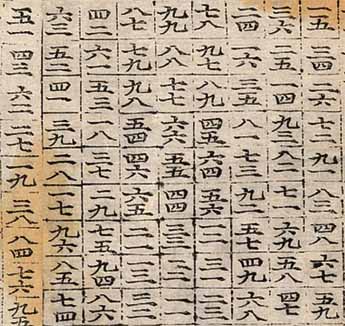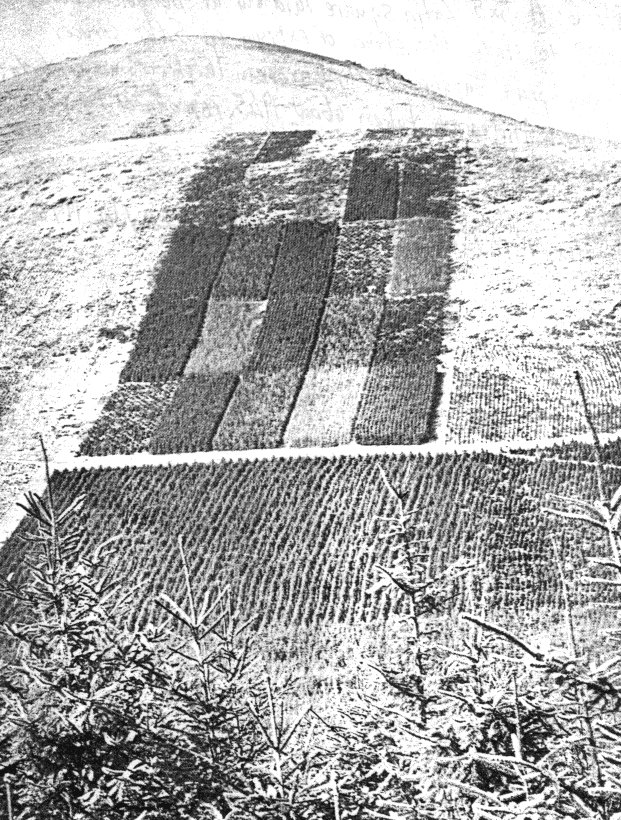The history of orthogonal Latin squares
Can you solve two Sudokus at the same time?
Can you write the 100 numbers 00 to 99 in a square so that each row and each column contains a number starting with each digit and a number ending with each digit?
People had been wondering about this question for centuries, before this solution was finally found using a computer in 1959. There is one number missing for you to fill in.
| 00 | 47 | 18 | 76 | 29 | 93 | 85 | 34 | 61 | 52 |
| 86 | 11 | 57 | 28 | 70 | 39 | 94 | 45 | 02 | 63 |
| 95 | 80 | 22 | 67 | 38 | 71 | 49 | ? | 13 | 04 |
| 59 | 96 | 81 | 33 | 07 | 48 | 72 | 60 | 24 | 15 |
| 73 | 69 | 90 | 82 | 44 | 17 | 58 | 01 | 35 | 26 |
| 68 | 74 | 09 | 91 | 83 | 55 | 27 | 12 | 46 | 30 |
| 37 | 08 | 75 | 19 | 92 | 84 | 66 | 23 | 50 | 41 |
| 14 | 25 | 36 | 40 | 51 | 62 | 03 | 77 | 88 | 99 |
| 21 | 32 | 43 | 54 | 65 | 06 | 10 | 89 | 97 | 78 |
| 42 | 53 | 64 | 05 | 16 | 20 | 31 | 98 | 79 | 87 |
You can check if it is right yourself. For example, the units in the first column are 0, 6, 5, 9, 3, 8, 7, 4, 1, 2; so evey digit is represented.
You can think of the problem as being a bit like solving two sudoku puzzles at the same time, so we'll call this the a double sudoku (the official name is an orthogonal Latin square).
What is the missing number?
Choi Seok-jeong
The double-sudoku problem also makes sense in different bases. It was solved in base 9, without any computer help, in 1700 by the Korean politician and mathematician Choi Seok-jeong.

He phrased the question slightly differently. In his picture each square contains two digits from 1-9 (written in Chinese characters), one written on top of the other. If you subtract one from each digit, you will then get a solution to the base-9 double Sudoku problem as all the digits will now be between 0 and 8.

Using the Chinese number system you should be able to translate his solution into Western numbers.
The video in the exhibition shows Choi Seok-jeong's solution using colours to represent the numbers. It creates new solutions by swapping rows and columns.
Leonhard Euler
The Swiss mathematician Leonhard Euler also studied the double sudoku problem and he found Choi Seok-jeong's solution independently almost a while he was working in St Petersburg in Russia. He solved the problem for any odd-numbered base and any base which is a multiple of four.

Euler suffered from problems with his eyesight, and when he studied this problem in 1779 he was almost totally blind in both eyes.
Applications
Mathematicians initially studied this question out of curiosity, but the solution to double-sudoku type problems is useful in experimental design.

Suppose that you have 10 different species of wheat and 10 different fertilisers and want to test the effect of each fertilizer on each crop. You can divide a field into a grid of 100 squares and plant each square with the species corresponding to the tens digit and apply the fertilizer corresponding to the units digit. This means you are get to try every possible combination of species and fertilizer and also ensure that all the different species you use and all the different fertilizers are distributed evenly across the field, minimizing the bias from effects such the south of the field getting more sunlight.
- If you swap two rows in a solution of the double sudoku problem, you get another solution of the problem. Can you think of any other ways of obtaining of obtaining new solutions from old ones?
- Can you solve the base-3 double sudoku problem?
- Is it possible to solve the base-2 double sudoku problem?



